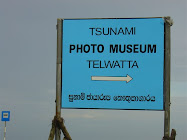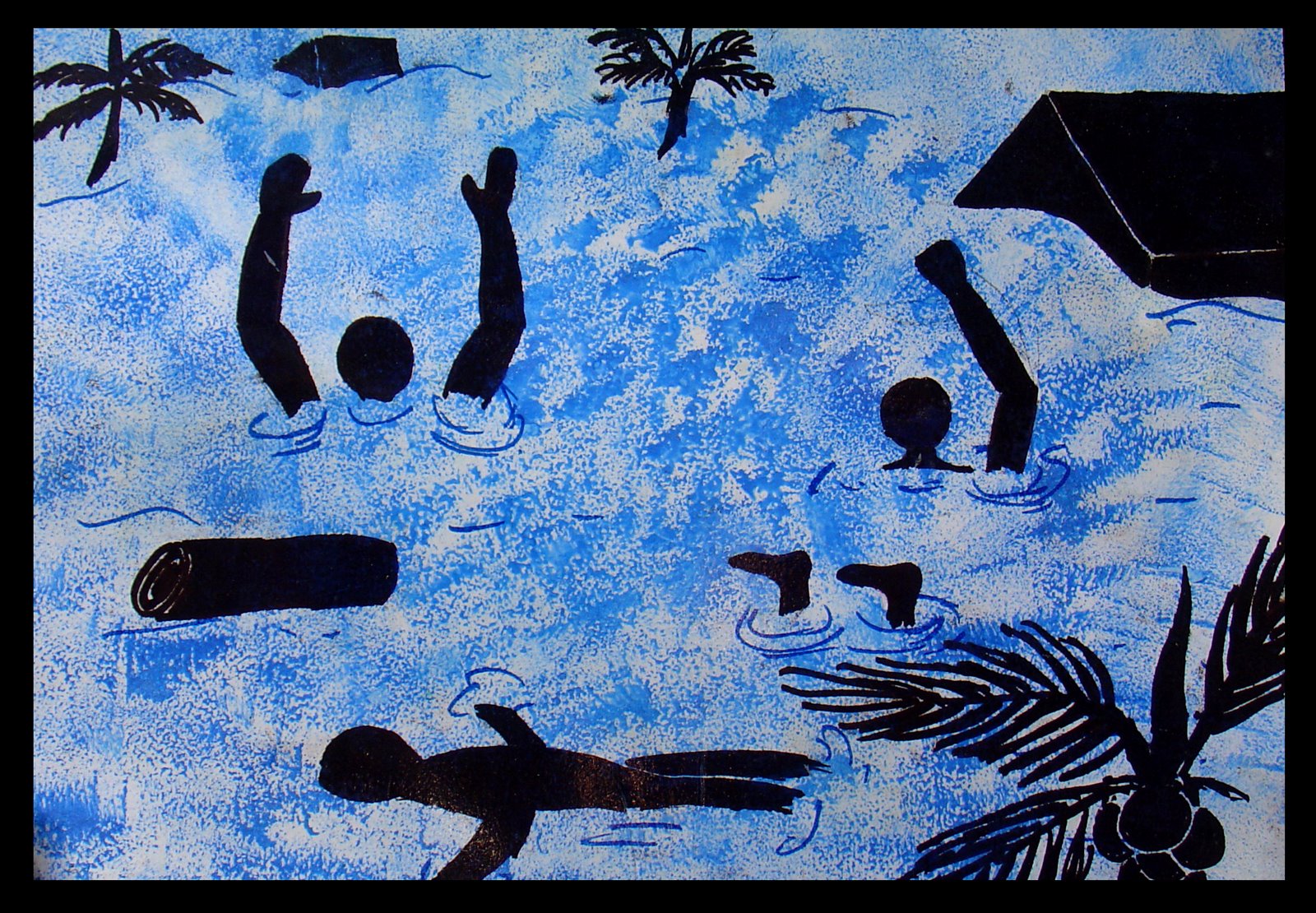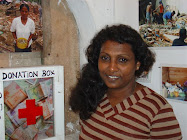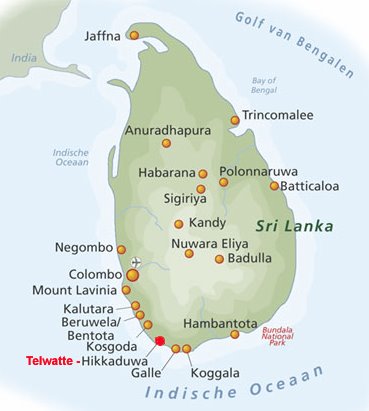At the 26 of December 2004 I was sitting in Holland behind the television watching the Tsunami videos and the aftermath. I had just got back from a trip to Thailand and I considered myself lucky being in Holland at that time, if I had made my trip 3 weeks later I could easily have been in the Tsunami myself.
I watched the news all the time and decided I wanted to help, not just donate money but go over there and help the people who had suffered so much. I wanted to help the people in whatever way I could. I tried to get in contact with NGO's or people working on the site but this was very difficult. Nobody wanted to take the responsibility for helping volunteers. Finally after 3 weeks I got in contact with Jessica (also from Holland) who was helping the people in Sri Lanka.
On the 26th of January 2005 I was on the plane to Sri Lanka. I got some little donations from friends and I had asked some schools in my village to donate some presents for children there. I came to Hikkaduwa where Jessica was working together with more volunteers from all over the world. At that time most foreign people in this area where paid and unpaid aid workers.
We started with clearing rubble by hand in the village Wellawatta. After that I went to Hambantota for a week to do activities for children with another volunteer group. Between the rubble we would be colouring picture books, play cricket and other games at schools and in camps and made paper flowers and music in the childrensward of the hospital.
When I came back to Hikka Jessica and Co had already started to work in Telwatta. Making temporary wooden huts for about 15 families that were still living in the Temple at that time. Every day I passed Telwatta junction and this was still a big mess. People where living in tents between the rubble. Nothing had been cleared yet. After some time I decided to leave the other volunteers with the building of the huts and I started to see if I could help clean the rubble at the junction site. I tried to find volunteers to help and money to buy the needed cleaning tools, cause I didn't have any budget myself. After one day of work with 8 people we where only able to clear one house foundation and I thought: "My god this is one hell of a job I started!!!!"
Any way although it seemed a long and heavy job to do we continued and after about 3-4 weeks we where able to clear the site from rubble. Main problem was to find the money to pay for the bulldozers and lorries that where needed to take away the rubble. Nobody had really a budget for this. I was very thankful that Jessica's foundation wanted to donate the money for this and also to pay for the people who helped to clean. In the mean time I was able to get the Danish Peoples Aid to build shelters on the site and also I was able to get some funding for the clearing from them.
This was how it all started in Telwatta for me. After that I have been doing all sorts of projects in the area, but I kept coming back to Telwatta, because for some strange reason I felt at home there. And the people there have made me feel welcome and even when they didn't have anything themselves they would give me a smile and a cup of tea. Also I admired their strong sense of community spirit and their strength to rebuild their lives after loosing nearly everything.
I have been up and down to Sri Lanka since the Tsunami for the last four years. All these times I had taken lots of photographs. I also found out how important photo's are for the Sri Lankans themselves. Not only because they like them and put the photo frames on a central place in their house. Very much because, through the Tsunami, the people lost 98% of their photographs and didn't have any camera's. It where the aid workers, volunteers and journalists that had the camera's. They visited the sites and took pictures, but most of these photos the village people didn't see themselves.
From this background and my own background as a visual artist and an art teacher I decided to start the museum project. A project that is based with different aims:
- To visualize the stories of the local people who where affected by the Tsunami. A place where big and small stories can come together and can be shared. Not only the stories of the local people, but also about the people who came to help.
- To create a place where people can see and remember what has happened, because their experiences and the disaster that followed has had a big impact on the lives of so many people and will stay with them all their lives. Besides this fact, the Tsunami story has become a major subject of Sri Lankan history and is important to show to the upcoming generations.
- To try and collect international photo material and bring it back to Sri Lanka and the affected villages, like Telwatta and Parelyia.
- The Tsunami brought people from all over the world to Sri Lanka. Many villages had not met people from other cultures before. I hope the museum will be a place where cultures can come together in the future as well.
It is impossible to tell the whole Tsunami story, as there are too many. But by telling some of them I think a lot of people will get a general idea what has happened. The museum is not only about the Tsunami but also about the first years after, as so much changed every day during this chaotic period. I have chosen for a museum with a personal touch instead of a museum that shows all the facts. For me the personal stories are more important than the facts. Only the necessary facts to tell the story will be presented in the museum.
I had not been in Sri Lanka before the Tsunami. When I came here I saw the mess of a culture that has been whirled up side down. I had no idea how it had been before and what was normal and not. I learned about Sri Lanka life and culture the other way round. I learned about every day Sri Lankan life from rubble. Now slowly I get to see and understand what it had been like before the Tsunami. I hope I will be able to do more projects in Sri Lanka in the future. For now I would like to invite you to explore the museum and read the Tsunami photo stories.
Jacky - an independent volunteer from Holland
skip to main |
skip to sidebar


By 14-year old girl

Jacky van Oostveen

Museum care taker
On the 26th of December 2004 the Tsunami hit different countries. Also in Sri Lanka many lives were lost and the damage was huge. Many people on the coast lost nearly everything they had. It is impossible to tell all the Tsunami stories, as there are too many. But by telling some of them we think people will get a general idea about what happened. The museum is about the Tsunami and the first years after, as so much changed every day. Here we see local people build up their lives from scratch.
Satelite Image Photo Museum
Tsunami

By 14-year old girl
Initiator Tsunami Photo Museum
Jacky van Oostveen
Donating Photo and/or Text material for the museum
Please send an e-mail: info@kunstkoffer.nl with the kind of material you have and would like to donate or give me a ring or textmessage on my mobile 00 31 (0)6 - 30266520.
Mrs. Kamani de Silva
Museum care taker
Help support the Tsunami Photo Museum
You can make a donation in the museum in the donation box.
sponsers
- HIVOS & many others
